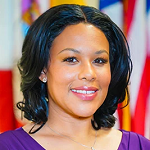Addressing the Youth Mental Health Crisis: The Urgent Need for More Education, Services, and Supports
Indicators of youth mental health and well-being indicate a growing public health crisis that has only been worsened by COVID-19. Yet, public policy has been slow to respond at the state and national levels. This report seeks to document the alarming trends in youth mental health and the disparities in access to care. The report then addresses several innovative state legislative solutions to promote school-based mental health education, supports, and services. The report also highlights the effect of these policies on advancing equity and the role of youth leadership in securing legislation. The information is designed to guide advocacy at the state level and begin to create a framework for federal policy.
YOUTH MENTAL HEALTH IS WORSENING, AND DISPARITIES ARE PERSISTING
In 2019, data from the National Survey on Drug Use and Health indicated that the percentage of youth ages 12-17 who reported experiencing a past-year major depressive episode (MDE) had doubled over the past decade. Disparities continue, and Black and Latinx children are less likely than white youth to receive treatment for their depression, including inpatient treatment, though they are no less likely to have a major depressive disorder.
COVID-19 worsened these alarming trends among youth and adolescents. From March to October of 2020, CDC data indicates children’s visits to the emergency room for mental health conditions increased significantly. COVID-19 also revealed ongoing disparities. Mental Health America’s online screening data indicates that youth ages 11-17 who identified as Native American or American Indian and those who identified as multiracial had the highest rates of depression. The largest increases in the proportion of youth experiencing suicidal ideation between 2019 and 2020 were for Black or African American screeners and Hispanic or Latinx screeners.
STATES HAVE ENACTED POLICIES REQUIRING MENTAL HEALTH EDUCATION, SERVICES, AND SUPPORTS THROUGH EXCUSED ABSENCES FOR MENTAL HEALTH
Schools are a critical setting for mental health policy. States have enacted policies, but the vast majority of states lack comprehensive policies in at least one category, and additional policies are needed to effectively address youth mental health needs.
Mental Health Education:
New York led the way with the nation’s first statute requiring K-12 mental health education. Virginia soon followed with a legislative requirement for high school students. Florida enacted rules that require every Florida public school to provide students in grades 6-12 with at least five hours of mental health instruction. Mental health education is designed to address the gap of 11 years between symptoms and treatment by educating students to help themselves and their friends. Social-emotional learning interventions have been proven to promote well-being and academic achievement.
Mental Health Services:
Access to mental health services begins with early intervention by school personnel. Some states have enacted and funded lower ratios of counselors and social workers to students to improve the number of health professionals in schools. Only 14 states have fully expanded Medicaid to cover services outside of those detailed in an Individualized Education Plan (IEP), though several others are in progress. Very few children have an IEP.
In addition to reimbursing for school personnel, some states have enacted programs to promote community-based mental health providers delivering services in schools. Minnesota and Kansas have effective programs encouraging school-based services by community providers with strong outcomes. These programs are particularly helpful in addressing inequity, and data indicates that students of color gain access to mental health care when treatment is provided at school. Given workforce shortages, telehealth is particularly helpful in a school setting, and approximately half the states have specified that schools are eligible sites of service under their Medicaid programs.
Excused Absences for Mental Health:
Students need support when they are feeling unwell and unable to attend school for mental health as well as physical health reasons. Oregon’s legislature passed the first bill in 2019, amending the excused school absence policy to include mental and behavioral health as a valid reason for an excused absence. Other states that have passed legislation regarding excused absences for mental/behavioral health include Colorado, Maine, Utah, Connecticut, and Virginia.
YOUTH LEADERSHIP HAS PLAYED A KEY ROLE IN DEVELOPING AND PASSING LEGISLATION
Youth in Oregon led the effort to enact excused absences for mental health with assistance from lobbyists for Providence Health and Services. Youth leaders were responsible for the Virginia education law. They drafted the statute, secured a prominent sponsor, and advocated for passage of the bill. Youth in New York received training in their government class and advocated for mental health education in schools by reaching out to their legislators and telling their stories.
Recommendations for the Future
1. Promote Youth Leadership at the Local, State, and National Levels to Improve Youth Mental Health in Schools
Youth leaders have driven changes in state policies affecting youth mental health and schools. Partners have supported these efforts by providing training and assistance in accessing the levers of government to achieve policy changes. The next phase of work should include mobilizing more youth across the country to advocate for change and supporting their initiatives and leadership.
2. Advocate for and Achieve More State Legislative Victories in Key Areas of Mental Health Education, Access to Services, and Mental Health Excused Absences; and Ensure Follow-up, Evaluation, and Effective Implementation
Although there has been innovation in the states, many of these initiatives have only spread to a few states. Advocates should carefully review their policies and build on existing structures for greater impact. Most states have significant gaps in policy regarding school-based mental health, and additional policies are needed to comprehensively address youth mental health needs, so there is much work to be done. In addition, advocates need to follow up and ensure evaluation and implementation even in states that have policies.
3. Continue Innovation and Research on Evolving State Statutes and Programs to Improve Early Intervention in Youth Mental Health, Particularly in the Areas of Screening and Peer Support
Similar to physical conditions, mental health conditions are easier to treat early. Two areas of state innovation that can be helpful in ensuring intervention at the beginning of a mental health condition are screening and peer support. Youth are interested in screening for mental health conditions, especially during the pandemic, and are more likely to talk to a friend than anyone else when experiencing mental health symptoms. Some states have begun to consider these policies, and further research in these areas is needed.
4. Draw on State Experiences to Inform a National Strategy and Implementation to Improve Youth Mental Health with an Emphasis on Youth Leadership, Equity, and School Initiatives
This report is limited to state policy, but the alarming trends in youth mental health are a national crisis and require a national strategy across and within agencies. The federal government needs to learn from the state initiatives profiled in this report and develop a national strategy, specific goals, a data collection process for measuring progress, and a specific implementation plan across agencies to improve youth mental health and promote equitable outcomes for LGBTQ+ and BIPOC youth, especially in schools. Specific agencies also need to prioritize youth mental health, coordinate to promote mental health education and services, and support and incorporate youth leadership.
Conclusion
With youth mental health declining and worsening during COVID-19, more urgency is needed at the local, state, and national levels. The efforts highlighted here should be enacted in communities and across states, and policy initiatives led by youth must be further developed at all levels of government.
Although the mental health and well-being of children and adolescents had been declining substantially before the pandemic, COVID-19 has accelerated these concerning trends. Depression, anxiety, and suicidality rates are all moving in the wrong direction, according to multiple data sources. In addition, youth dying by suicide have been getting younger, especially Black youth. While these worsening outcomes are generally acknowledged in the press and by policymakers, there has been no coordinated, public health response focused on improving well-being and resilience. A public health crisis requires a public health response.
Basic tenets of public health include prevention and providing services where they are easily accessible. For children and youth, schools are the most obviously accessible places to reach them. Research indicates that mental health services are much more likely to be initiated if provided in schools, and students of color disproportionally access their mental health care at school. The COVID-19 pandemic made this especially apparent – without school, a critical touchpoint for reaching children with needed services was lost, with some of the most significant impacts on those with the least access to resources otherwise. Although not all youth are best reached in school, this setting should be a critical part of a comprehensive public health response to addressing the increasing mental health conditions in young people.
Schools already play an important role in promoting health literacy and good health practices. Virtually all schools have a health education curriculum, including topics such as sexuality and reproduction, healthy eating, exercise, and more. Many schools have also prioritized healthy practices with respect to food and beverage options offered to students and opportunities for exercise. Yet, there has not been a similar effort on mental health literacy and healthy practices for mental health.
Listening to youth voices provides invaluable guidance on what should be included in school-based initiatives. For example, Mental Health America asked youth ages 14-24 what mental health supports they need. The results revealed that access to mental health professionals and mental health breaks as part of work or school were the top resources young people requested to support their mental health. Learning about mental health was also one of the highest-ranked supports requested by youth.
Youth have also played a significant role in enacting state legislation on these key issues. States have begun moving forward in these areas, and state policy is often a critical step toward federal legislation. This report and the tools embedded within it are designed to assist state policymakers, youth, families, educators, administrators, mental health professionals, and others in advocating for a package of state reforms to move closer to a public health response to the mental health needs of our youth.
TARGET USERS OF THIS REPORT
- State policymakers
- Advocates
- Youth
- Families
- Administrators
- Mental Health Professionals
- Educators
To understand the scope of tools needed and the best approach to this issue, MHA held a series of meetings with an Advisory Board and additional experts in schools, mental health, equity, youth empowerment, and grassroots advocacy. From these conversations and a review of documents and articles, these themes emerged:
PRINCIPLES TO GUIDE SCHOOL-BASED MENTAL HEALTH EFFORTS
1. Use a strengths-based, asset-driven approach. Well-being, resilience, connection, and inclusion should be the goals, not safety and discipline.
2. Frame educational equity as health equity. Emphasize the connection between learning and health, including mental health, and use an equity lens to improve educational and health outcomes for BIPOC and LGBTQ+ youth through mental health initiatives.
3. Empower youth as a key measure of success. Include young people in planning, understanding needs, developing policies, and implementation. Educate youth on the legislative process so they can fully participate in policy change.
4. Work within or build on top of existing structures, Including state legislation/health education requirements, curriculum, and interests. Synthesizing and respecting existing efforts, such as social-emotional learning (SEL) and suicide prevention programs, builds momentum.
5. Consider implementation, evaluation, and ongoing innovation as important as initial policy. Provide adequate technical assistance regarding effective curriculum, processes, and comprehensive training for all school personnel, families, and students as critical components of implementation. Encourage innovation, such as telehealth, digital tools, and new ideas generated by students and others. Consider evidence-informed approaches and measurement of outcomes to ensure all students benefit.
6. Leverage policy changes for a whole school/whole community/whole child approach. Conduct comprehensive assessments, address gaps, and connect to community resources to improve student mental health, resilience, and well-being.
Based on these themes, research on what youth want, and current policy initiatives in the states, this report focuses on:
» data that describes the need for additional action to address youth mental health;
» key state-level policy opportunities for advancing mental health in schools; and
» an advocacy case study for changing state policy for mental health education in schools.
Sydney Daniello, an author of this report, discusses six guiding principles for school districts and policymakers to incorporate in the planning, implementation, and evaluation of effective school-based mental health services and supports. WATCH NOW
GENERAL TRENDS IN YOUTH MENTAL HEALTH
Over the past decade, even prior to the COVID-19 pandemic, adolescents in the United States began to experience greater rates of mental health problems. In 2019, 16% of youth ages 12-17 reported experiencing a past-year major depressive episode (MDE), compared to 8% in 2009, double the previous rate. Rates of children’s emergency department visits related to deliberate self-harm increased 329% between 2007 and 2016. Deaths by suicide among youth increased by over 30% between 2014 and 2017.
COVID-19 is worsening these alarming trends among youth and adolescents. From March to October of 2020, children’s visits to the emergency room for mental health conditions increased 31% for those 12-17 years old and 24% for children ages 5-11 compared to the same period in 2019.
In 2020, nearly 1 million youth ages 11-17 took a clinically validated mental health screen through the MHA Online Screening program, a 628% increase over 2019. Not only are the number of youths searching for help with their mental health increasing, but throughout the COVID-19 pandemic, youth ages 11-17 have been more likely than any other age group to score for moderate-to-severe symptoms of anxiety and depression than any other age group. Eighty-four percent of 11–17-year-olds who took an anxiety screen in 2020 scored with symptoms of moderate-to-severe anxiety, and 91% of youth who took the PHQ-9 for depression scored with symptoms of moderate-to-severe depression. These rates were 7% and 9% higher than the rates among adults over 18 for anxiety and depression, respectively.
MHA asked youth ages 11-17 who were taking a mental health screen what was contributing to their mental health concerns, and these were some of their responses:
- “I feel so disconnected and confused and alone.”
- “Feeling like no one else is feeling what I’m feeling, or feeling like no one is there for me.”
- “Not knowing how to get help.”
- “I don’t know what’s happening to me but I need help. I’m not okay.”
- “Feeling so lost and alone.”
- “…wondering what is wrong with me because no one else seems to feel this way.”
- “I know people who I fear risk suicide but I don’t know how to help.”
- “Never had enough help to know.”
INCREASING MENTAL HEALTH DISPARITIES
The aggregate statistics mask stark disparities – in 2019, 46.8% of youth that identify as gay, lesbian, or bisexual reported seriously considering suicide – more than three times the rate of youth identifying as heterosexual (14.5%). Further, in 2019, 25.5% of American Indian or Alaskan Native youth, 11.8% of Black youth, and 8.9% of Hispanic youth reported attempting suicide in the past year in 2019, compared to only 7.9% of white youth. Black youth, and especially Black boys and younger Black youth, have demonstrated rapid increases in suicide attempts and suicide deaths over the past decade, leading to the disparities observed today. The Congressional Black Caucus highlighted the troubling trends for Black youth in their path-breaking report, Ring the Alarm, the Crisis of Black Youth Suicide In America.
Mental Health America’s (MHA’s) online screening data indicates further inequities in mental health during the COVID-19 pandemic. For example, youth screeners ages 11-17 who identified as Native American or American Indian and those who identified as multiracial had the highest rates of depression, with 93% scoring for moderate-to-severe depression in 2020. The proportion of people reporting frequent thoughts of suicide or self-harm was also highest among youth who identified their race as “Other” (57%), youth who identified as Native American or American Indian (57%), and Asian or Pacific Islander (54%) in 2020. The largest increases in the proportion of youth experiencing suicidal ideation between 2019 and 2020 were for Black or African American screeners (5% increase) and Hispanic or Latinx screeners (4% increase).
Rates of suicidal ideation reported on MHA Screening are also highest among youth, especially LGBTQ+ youth. In 2020, over half (51%) of 11–17-year-olds reported having thoughts of suicide or self-harm more than half or nearly every day of the previous two weeks, totaling nearly 160,000 youth. Rates of frequent suicidal ideation were even higher among LGBTQ+ youth, with 62% reporting frequent thoughts of suicide or self-harm, totaling nearly 60,000 individuals.
TRENDS IN ACCESS TO CARE
Despite increasing awareness of the mental health crisis in young people, access to care remains a significant challenge. Only 43.3% of all youth with a past year major depressive episode (MDE) received any mental health treatment in 2019. Overall, access to care has improved over time, as the percentage of all youth with past-year MDE receiving treatment increased 9% from 2009 to 2019. However, when examined by race and ethnicity, improvements in the receipt of care among youth with MDE are inconsistent, especially for Black and Hispanic youth. Despite inconsistent improvement, almost two-thirds of youth of color that need help still do not receive care, revealing important disparities in access by race. Only 50.3% of white youth with past-year MDE received mental health services, and the percentages were even worse for children of color, with 35.6% of Black and 36.8% of Hispanic youth with past-year MDE receiving mental health treatment in 2019. Note that this only describes whether youth report any access to treatment while having MDE – it does not indicate whether they received sufficient care or whether that care was effective for them.
MENTAL HEALTH SERVICES IN SCHOOLS REDUCE DISPARITIES AND IMPROVE ACCESS TO CARE:
Youth of color are more likely than white youth to receive mental health services in educational settings, as opposed to general or specialty medical settings. School-based services reduce barriers such as transportation and health insurance that disproportionally affect youth of color. Despite the fact that youth of color comprise less than half of the total population of youth with MDE, 52% of youth with MDE who only received care in educational settings were youth of color, including 22% Hispanic youth and 20% non-Hispanic Black youth. In a recent study of a large urban Midwest school district of over 20,000 students, researchers found that BIPOC students in grades K-8 were over 2.5 times more likely to receive school mental health services compared to their white peers. Given this data, increasing access to school-based mental health services can promote equity and reduce disparities in access to care.
It is unknown how COVID-19 has impacted access to care nationally, as many children lost access to health insurance and schools, but access to virtual care options also improved substantially. Centers for Medicare & Medicaid Services (CMS) data indicates that for youth under 18 covered by the Medicaid program, there were 14 million (34%) fewer mental health services in 2020 compared to 2019, but CMS did not analyze the impact from declines in school mental health services and not all school services are reimbursed by Medicaid. Increasing access to school-based mental health services would be an important way to reach much of the youth who may have been affected by the pandemic, especially youth of color.
COMPARISONS WITH OTHER PUBLIC HEALTH CONCERNS OF YOUTH
Mental health conditions and self-harm are the greatest contributors to the burden of disease for young people by a substantial margin. The Institute for Health Metrics (IHME) at the University of Washington uses a measure of disability-adjusted life years (DALYs) to quantify the burden of different diseases throughout the lifespan. For people ages 5-19 in the United States in 2019, mental health conditions and self-harm contributed 23.1% of the total DALY burden. Asthma and road injuries, the second-and third-greatest burdens, contributed only 6.8% and 6.0%, respectively. See figure below.
To address this growing youth mental health crisis, states can leverage schools as a touchpoint for promotion of mental health to avoid problems from developing, as well as early intervention and treatment to meet needs when they do arise. The sections below analyze (1) prevention and mental health promotion options for states with a focus on mental health in schools, (2) early intervention and treatment integrated into schools, and (3) youth empowerment to drive cultural shifts in schools.
A. Prevention and Promotion: Mental Health Education & Social-Emotional Learning
Mental health education in K-12 classrooms often includes both social-emotional learning and mental health literacy, with younger grades beginning with social-emotional learning and mental health literacy included in health education classes for older students.
MENTAL HEALTH EDUCATION AND MENTAL HEALTH LITERACY
Mental health literacy curriculum is designed to be provided to all students and often includes information about mental health conditions, wellness skills, and how to seek help. Australian researchers have demonstrated that people, particularly students, who receive mental health education are more likely to recognize and seek help for the symptoms of a mental health challenge. The researchers coined the term mental health literacy, which is, they explain, an extension of health literacy and is defined as “knowledge and beliefs about mental disorders which aid their recognition, management or prevention.” There are several studies indicating that mental health education generates positive, meaningful outcomes. For example, a recent meta-review of effective suicide prevention strategies concluded that educating high school students with a mental health curriculum was one of the few policies that was proven to reduce suicide attempts and suicidal ideation.18 A randomized controlled study of a suicide education program provided to diverse technical high school students showed students who received the intervention were 64% less likely to report a suicide attempt after three months than those in the control group.
Another study compared states with school mental health policies to those lacking these policies. States that mandate more mental health policies in public schools overall have significantly lower adolescent and young adult suicide and substance abuse rates, but one subset of policies was particularly impactful. State-mandated school-based mental health centers, social-emotional curricula, and school professional development in suicide prevention were all associated with significantly lower adolescent and young adult suicide and substance abuse rates.
Surveys consistently show that youth are aware of their own mental health challenges and those of their peers, and as such, are interested in mental health education. A 2019 study by the Pew Research Center found that anxiety and depression top the list of challenges teens see among their peers. In a survey of teens ages 13-17, 70% said that anxiety and depression were major problems among themselves and their peers, outranking other significant social problems such as bullying, substance use, teen pregnancy, and even poverty. This finding suggests that because teens themselves recognize their own mental health challenges, they may be more motivated to learn about mental health in order to increase their own ability to recognize signs and symptoms and to get help.
SOCIAL AND EMOTIONAL LEARNING
According to the Collaborative for Social and Emotional Learning (CASEL), SEL is the process through which all young people and adults acquire and apply the knowledge, skills, and attitudes to develop healthy identities, manage emotions and achieve personal and collective goals, feel and show empathy for others, establish and maintain supportive relationships, and make responsible and caring decisions. SEL can include both classroom curricular content and approaches to classroom management, such as rules that reinforce positive behaviors. More recently, trainings have become available to ensure that SEL activities are unbiased and culturally responsive for students and educators of racially and ethnically varied backgrounds.
Two meta-analyses of studies of social-emotional learning interventions found significant improvements for students. The first study, in 2011, found that compared to controls, students demonstrated enhanced skills, attitudes, and positive social behaviors following intervention and fewer conduct problems and had lower levels of emotional distress. Academic performance was significantly improved by 11% in the subset of studies measuring this outcome. A 2017 follow-up study found that gains endured over time and social and emotional learning interventions had an effect on promoting positive outcomes, such as improving skills, positive attitudes, prosocial behavior, and academic performance and avoiding negative outcomes, including conduct problems, emotional distress, and substance use. These gains were achieved across racially and socioeconomically diverse student populations.
POLICY OPTIONS FOR ADVANCING MENTAL HEALTH EDUCATION
Part IV of this report offers a lengthy case study of policy change in New York State for mental health education in schools. In addition to New York State, there are several other states that have laws or regulations requiring mental health education, and in the coming years, more will likely be added. It is expected that the federal government will begin providing more technical assistance and guidelines to improve mental health literacy in schools. States have taken similar strategies specific to social and emotional learning as well. Ideally, these approaches will be combined with school-wide integration of services, as described in subsequent sections. Youth leadership has been critical to these efforts.
Many of these laws build upon existing curriculum and requirements. For example, Virginia’s statute (HB 1604) adds the following language after the state code’s general support for physical and health education in the schools:
Such health instruction shall incorporate standards that recognize the multiple dimensions of health by including mental health and the relationship of physical and mental health so as to enhance student understanding, attitudes, and behavior that promote health, well-being, and human dignity.
YOUTH EMPOWERMENT
Angela Wallace of MassachusettsAngela Wallace of Massachusetts discusses her experience as a Black female student in a racially homogenous school district in Massachusetts and why she was driven to speak out about her challenges regardless of shame and bias. Angela has provided expert witness testimony for the Massachusetts Legislative Committee on Mental Health and Substance Use Recovery in favor of mental health education legislation.
The bill further provides that the State board of education will review and update the health standards of learning for students in grades nine and 10 to include mental health education and requires the state to consult a wide array of stakeholders in developing the new standards, including providers, the state mental health agency, and advocacy and peer organizations.
Importantly, Virginia’s process was entirely youth-led. Students who were aware of the New York law secured sponsors in the Virginia legislature and advocated for the bill. They approached Virginia State Senator, Creigh Deeds, who sponsored the bill. Senator Deeds had a son who died by suicide after being denied psychiatric services in 2013. Finding a very motivated and well-positioned sponsor was a key factor in moving the bill forward.
Just as in New York, getting a law passed was only the first step toward progress. Advocacy organizations highlighted the students’ success and worked with the board of education to spur the agency to prioritize conducting the required review and update of the standards. Unlike New York’s law, the Virginia statute does not include funding for a technical assistance center, which has hampered widespread implementation and tracking of progress. In Virginia, advocates and policymakers have continued to build on the student education requirement and a bill to require teacher training passed in 2020.
In Florida, the state board of education voted to require every Florida public school to provide students in grades 6-12 at least five hours of mental health instruction. The board specified both the number of hours and the general content of the instruction. The instruction must include: awareness of signs and symptoms; process for getting or seeking help for themselves or others; awareness of resources (i.e., Fortify Florida app and the National Suicide Prevention Hotline: 1-800-273-8255); and what to do or say to peers struggling with mental health disorders.
This requirement was championed by First Lady Casey DeSantis as part of her Hope for Healing Florida, an initiative to promote mental health and avoid addiction. Again, having a high-profile sponsor for the initiative was very helpful. With respect to the new education requirement, the First Lady said:
Ron and I have traveled the state and have heard from many families who voice concern about the struggles that adversely affect so many of our children. We know that 50% of all mental illness cases begin by age 14, so we are being proactive in our commitment to provide our kids with the necessary tools to see them through their successes and challenges. Providing mental health instruction is another important step forward in supporting our families.
In Florida, mental health education is one of several components addressing school-based mental health and resiliency. The Hope for Healing initiative has also included partnering with the state’s athletic teams to promote resiliency and create a peer-to-peer student mentoring program.
Although the shooting at Marjorie Stoneman Douglas High School increased statewide awareness of the need for mental health education and supports in Florida, it also has led to an over-reliance on law enforcement, requiring every school to have an armed staff member or a law enforcement officer. This has resulted in higher rates of arrests, especially for students of color.26 Focusing on mental health and wellness instead of safety is critical to ensuring equity in state reforms.
In Appendix C of this report is a state-by-state chart with every state and its respective current mental health curriculum requirements. CASEL also offers resources on state efforts related to SEL.
In addition to these strategies, the Every Student Succeeds Act (ESSA) gives states new flexibility in administering federal grants for schools that serve low-income families and allows for greater focus on student health and well-being. This also gives advocates additional opportunities to advance mental health in schools. For example, ESSA gives states flexibility in selecting a “non-academic” indicator of school success to track, which can include a measure related to student mental health. ESSA also allows some of the school funding and professional development dollars to go toward student well-being, opening the door to funding programs and staff training in mental health education in schools. Advocates can work with their state departments of education to ensure that their ESSA plans promote student mental health and well-being. More information is available in this issue brief.
After the COVID-19 pandemic, the American Rescue Plan Act (ARPA) creates other opportunities. ARPA offered over $200 billion in additional investment in K-12 public education, with a specific requirement that some of these funds must respond to students’ academic, social, and emotional needs. Advocates can work with state departments of education that are administering these programs to ensure that these funds go toward building the necessary infrastructure and training to integrate mental health education in schools.
Lessons Learned From State Policy Efforts Seeking Mental Health Education Requirements
- Build on what exists. Review the state-by-state chart to see where your state is and see what you can add to what you already have regarding health curriculum requirements. Try to increase coverage to K-12 students but at a minimum cover 6-12. Include a technical assistance center to implement the requirement or as a stand-alone if the curriculum requirement is not moving forward.
- Empower youth leadership because they can powerfully articulate the need for this legislation and reach legislators in their districts.
- Find a high profile, motivated, and effective sponsor in the legislature or executive branch because that can be very impactful.
- Be vigilant with implementation. Getting a bill passed is only the first step. So if your state has any requirements, find out if they are being implemented. Ensure that equity is considered in all aspects of implementation.
- Leverage student education requirements to have a more holistic approach, either through technical assistance and training or more comprehensive initiatives for programs such as peer support or staff training. Ensure equity within reform efforts through a wellness and mental health focus.
B. Early Intervention and Treatment: School-Based Mental Health Services
Mental health education is a universal intervention, but schools must be able to respond when students reach out for help. An adequate response includes school mental health personnel, who can provide early interventions and coordinate care, as well as treatment professionals, who can be part of a school-based health center, a community partner, or other arrangements. These different levels of response are often referred to as Multi-Tiered Systems of Support (MTSS), with Tier 1 addressing universal needs, Tier 2 for students at risk or in need of early intervention, and Tier 3 for students who need individualized treatment and support for mental health and substance use conditions.30 School personnel are generally involved in all tiers, and community providers may provide general education in Tier 1 but more likely provide services in Tiers 2 and 3.
In 2019, the ACLU released a comprehensive report detailing the lack of school mental health personnel using data provided by the Department of Education and noted that 14 million students were in schools with a police officer, but no counselor, nurse, school psychologist, or social worker. Over 90% of schools failed to meet professional standards for school counselors. The report noted that low-income students and students of color are more likely to get their mental health services at school and are disproportionately harmed by the low ratio of school personnel. The report also noted the importance of school-based mental health centers and the ability of students to access services on site. With COVID-19, there continues to be a strong interest in telehealth, and financing remains a critical need to support school-based personnel and community treatment options.
We found several effective state policy strategies for advancing school-based mental health services, including laws or policies setting ratios of students to school personnel, Medicaid policy approaches, using telehealth to provide school-based services, and policy proposals improving school-based mental health services from community providers. Note that, across all of these approaches, federal relief funds from ARPA offer new opportunities, including additional funding for schools to integrate mental health services, to purchase telehealth equipment, to provide training for school staff, and to fund mental health services that could be integrated within schools.
LAWS OR POLICIES SETTING RATIOS OF STUDENTS TO SCHOOL PERSONNEL
There are statutes and board of education policies at the state level setting ratios of students to school personnel. Policy analysts studying counselor ratios and state policy initiatives have concluded, “the relationship between these policy levers and a state’s median school counselor ratio is striking. For instance, of the seven states with the highest median ratios (least access), none have mandated a maximum student-to-counselor ratio. Conversely, of the six states with the lowest median ratios (greatest access), all either have a mandated student-to-counselor ratio or a recommended ratio with dedicated state funding to help support counselor access.”
Improving school ratios is another area where students have provided leadership. In one district, the advocacy of a group of students doubled the number of school mental health professionals through testimony designed to ensure that the allocation of new resources to the district was spent to promote mental health.
Advocates seeking to understand their state requirements can review the ACLU report and the American School Counselor Association’s list of state-by-state legislation and mandates. For a better understanding of equity and school counselor ratios, this fact sheet provides information on the 38 states that are failing to provide adequate counselors for their students of color and low-income students and has specific steps for advocates to address these shortfalls.33 The National Association for College Admission Counseling has developed maps at the school district level with 2015-2016 data for school counselors.
YOUTH EMPOWERMENT
Melanie Zhou of ColoradoMelanie Zhou of Colorado discusses the burden of experiencing a classmate die by suicide. This motivated her to push for student representation on the board of education and to advocate for funding to address the mental health needs of students in her school district. She successfully advocated for millions of dollars in funding for mental health professionals and subsequently founded a mental health student healing group.
Some of the most favorable ratios in the state bills are in Colorado and Virginia. In 2019, Colorado passed a statute creating a pilot program in 10 schools to achieve a ratio of 250 students per mental health professional and evaluate the results on the students’ physical and mental health. In 2020, Virginia passed a statute lowering the ratios of school counselors to 1:325 for K-12 beginning in the 2021-2022 school year. The state has progressively worked to lower the ratios, and advocates may want to look at their state policies over time. In addition, counselors can spend much of their time in administrative duties, and Arkansas passed a bill to limit such work to 10% of the time and specify the student contact activities that counselors should be doing.
There is much work to be done, particularly for schools serving children of color and low-income students. According to the ACLU report, more than 67,000 schools lacked any social worker, and more than 24,000 schools (25%) reported having no counselor on staff. In addition, 43% of public school students were enrolled in a school that did not have a school psychologist.
MEDICAID POLICY APPROACHES
In 2014, the Centers for Medicare and Medicaid Services (CMS) reversed longstanding policy and issued a letter to State Medicaid Directors allowing states to bill for school services for any Medicaid eligible child, not just those who had an Individualized Education Plan (IEP) and had qualified for services under the Individuals with Disabilities Education Act (IDEA). In 2019, CMS and the Substance Abuse and Mental Health Services Administration (SAMHSA) issued a joint informational bulletin offering additional guidance to states on how to bill for school services if they chose to do so.
To date, 14 states have chosen to take advantage of the ability to bill Medicaid beyond IEPs, and several others are in progress. These states are listed in a state policy dashboard in Appendix E. Some states have specifically enacted legislation to enhance mental health benefits, and advocates can find details on state efforts in this report from the Healthy Schools Campaign. Michigan, for example, passed SB 149, appropriating $30 million to pay for school mental health professionals and an additional $1.3 million for the state to issue a state plan amendment to CMS to be able to draw down more Medicaid dollars for mental health services. The relevant provision read:
Sec. 31n. (1) From the school mental health and support services fund money appropriated in section 11, there is allocated for 2018-2019 for the purposes of this section an amount not to exceed $30,000,000.00, and from the general fund money appropriated in section 11, there is allocated for 2018-2019 for the purposes of this section an amount not to exceed $1,300,000.00. Not later than February 15, 2019, the department and the department of health and human services shall establish a program to distribute this funding to add licensed behavioral health providers for general education pupils and shall seek federal Medicaid match funding for all eligible mental health and support services.
Early results show significant increases in behavioral health staff. As of May 2021, the Michigan state team working on this initiative reported behavioral staff increased from 1,738 to 2,975, a 71.17% increase. In addition, reimbursement also significantly increased by $6.17 million from Medicaid expansion. This Michigan case study provides additional details for states seeking to make similar changes.
USING TELEHEALTH TO PROVIDE SCHOOL-BASED SERVICES
In addition to expanding funding for Medicaid, some states have expanded access to services by specifically adopting Medicaid policies indicating that schools can be an originating site for telehealth. According to a Spring 2021 report from the Center for Connected Health Policy, 27 states and the District of Columbia expressly have policies allowing schools to be originating sites, although sometimes restrictions apply. These states are listed in Appendix E.
According to the Center’s analysis, “the most common modality allowed in schools is live video, and only four states allow a store-and-forward modality to be used (NC, NM, OK, and GA). Eleven of these states require parent informed consent for a minor to participate.” Services vary from state to state, but the most common services are therapy services, which include mental health therapy as well as speech, occupational, and physical therapy.
Texas has maximized the use of telehealth to provide school-based mental health services. In 2019, the state legislature passed Senate Bill 11, creating the Texas Child Mental Health Care Consortium, a collaboration of the state’s higher education institutions, nonprofits, and service providers. The Texas Higher Education Coordinating Board was the administrative agency tasked with receiving and appropriating the funds for Consortium initiatives.
One of the initiatives relevant to school-based mental health was the Texas Child Health Access Through Telemedicine (TCHATT) program. This program is built on existing telehealth programs in the state, including a consultative pediatric mental health access program funded in part by Health Resources and Services Administration (HRSA) and operating in many states. The team includes licensed professional counselors, licensed clinical social workers, a child psychologist, licensed vocational nurse, child psychiatrists, and community health workers. They collaborate to assess, refer, and treat students, who can receive up to four sessions from the program at no charge to families.
Key elements of the program include a partnership between the team and schools, the provision of counseling services and telepsychiatry to students, and guidance to school professionals in assessing, supporting, and referring students.
As of October 15, 2020, 96 school districts in Texas were actively involved with TCHATT, covering 1,124 schools and a total student population of 842,422. It is anticipated that the total number of covered students will expand to 1.33 million once the memoranda of understanding in progress are fully executed. Funding for the fiscal year 2020 and 2021 is approximately $37 million. The program is too new to have outcomes, but anticipated data may include numbers reached, number of services, satisfaction, reduced mental health needs, reduced school absences, and improved graduation rates.
POLICY PROPOSALS IMPROVING SCHOOL-BASED MENTAL HEALTH SERVICES FROM COMMUNITY PROVIDERS
One of the most effective policy changes has been state grant programs that provide school-based mental health services through partnerships between community providers and schools. These programs eliminate the need for transportation, parents having to take off work, wait times, and other barriers. Youth are also more likely to complete treatment in schools compared to other settings.42
These programs have demonstrated very positive effects on access and other outcomes, such as graduation rates and academic achievement. For example, the 2018 Kansas legislature passed a statute creating a pilot program that they have continued to fund at increased levels. The Mental Health Intervention Team (MHIT) pilot program began with nine school districts and provided resources for school-based mental health liaisons and for case managers and therapists at the community mental health centers (CMHCs). The local education authority and the community mental health centers entered into memorandums of agreement, and the Kansas State Department of Education created the payment mechanism and the database to track outcomes. Creating the database within the state agency saved resources and allowed for customization to meet the program’s needs.
A summary report from the Kansas State Department of Education at the end of the first fiscal year stated:
At the end of fiscal 2019, over 1700 students were receiving CMHC services through the MHIT project, including 212 foster students. Overall improvement was shown in academics, attendance, and behavior in many of the students. Feedback from families, students, and teachers was positive, and families appreciated the convenience of the school-based partnership with the local CMHC. Students appeared to understand their personal issues and how to effectively change their own behavior. Teachers and school staff also reported fewer disruptions in the classroom which improved the school climate.
REDUCING DISPARITIES
Bernadeia Johnson of MinnesotaAs superintendent of Minneapolis Public Schools, Bernadeia Johnson intentionally set out to improve access to mental health services through schools, especially for underserved BIPOC students. By spearheading an initiative with community stakeholders and education leaders, she successfully secured additional supports for marginalized students and families to receive mental health services and supports on school campuses, where they were most likely to benefit from it.
The program tracks outcomes, and results from the past two years indicate similar positive outcomes. Approximately two-thirds of children improved their attendance, and over half improved internalized behaviors; roughly 60% improved their academic performance, and approximately 70% improved external behaviors. Given the positive early outcomes, the legislature has continued to invest in the program. For the 2020-2021 school year, 56 school districts and 212 schools are participating in the mental health intervention team program.
Minnesota has one of the oldest school-linked programs in statute, first passed and funded by the 2007 legislature. Over the years, the program has expanded substantially to cover more schools and has increased its focus on evidence-based practices such as trauma-focused cognitive behavioral therapy. Advocates in Minnesota credit the educational community for the expansion, noting that school superintendents and teachers have been some of the most vocal advocates for the program at the legislature because they have seen the impact on their schools and communities.
Under the program, the Department of Human Services, not the state education agency, distributes grant funds to local community mental health agencies to “offer mental health services in schools, including assessment, treatment and care coordination, teacher consultation, and school-wide trainings.” These community mental health agencies bill both public and private insurers for clinical services so that the grant funds are used for students who do not have health coverage or are underinsured. Funds can also be used to pay for the services that are not typically reimbursable, such as in-service training and outreach to families and communities. Funds can also be used for equipment, connection charges, on-site coordination, and other expenses to set up telehealth programs. Advocates and providers worked to address the bidding process to ensure more consistency in funding from year to year for community mental health agencies.
Importantly, the program has been effective in meeting the needs of children who had previously been underserved. Almost half of the children (47%) had not received mental health services before they were provided care under the school-linked program. This percentage was even higher for children of color, and 58% of children of color had not received any mental health services before participating in the program. School-linked programs can begin to narrow the access gaps for mental health care for children of color. Of the children newly identified, half of those were children with serious emotional disturbance, indicating that many children with very high needs are not identified without school-linked programs.
One of the recent recommendations for improving the program included youth leadership and voice. Stakeholders recommended utilizing the Minnesota Youth Council or another youth advisory process “to review implementation practices, methods, and barriers to school-linked programs to gain youth perspective on successful access to services. Actively involving young people in a consultation process can create an opportunity to get reliable information about young people’s needs and everyday experiences accessing mental health services.” The Minnesota Youth Council Committee was created by Minn.Stat. 124D.957, to provide advice and recommendations to the legislature and the governor.
Lessons Learned From School Policies Increasing Access to School-Based Mental Health Services
- Seek sustainable funding for community mental health providers. Medicaid policies should encourage payment, and private insurers should be required to pay their fair share of school services, allowing state grant funds and other resources to be used for training and services for children who lack insurance or are underinsured. Telehealth should be permissible as a way to reach students more easily. Resources should go directly to the community mental health providers rather than the schools for the funding areas related to services.
- Measure outcomes to support expansion of the program. In both Kansas and Minnesota, strong outcomes led to increased funding and more schools covered. The Kansas Department of Education developed a database to ensure adequate tracking of key outcomes.
- Design programs to increase access to mental health care and address inequity. In Texas, the TCHATT program is reaching children in parts of Texas that lack mental health providers and is providing immediate access to care in crisis situations. The Kansas MHIT program included children in the foster care system as a key target for the program. Minnesota data indicated that over half of the children served had not received mental health services prior to the school program, and almost 60% of children of color had not received any services before participating in the program.
- Engage beneficiaries of the legislation in advocating for the program. In Minnesota, education stakeholders have been particularly effective in reaching out to their legislators to increase funding to allow expansion of the program to more schools.
- Ensure youth have a key role in advocacy and implementation of the program. In Minnesota, a stakeholder group evaluating the school-linked program recommended an existing Youth Advisory Council or other similar body provide ongoing input into implementation.
C. Youth Empowerment: Driving School Culture Change
Youth empowerment is a key strategy for effective state school mental health policy. With respect to New York and Virginia mental health education legislation, young people were key advocates with the legislature, and for the Virginia bill, they were the driving force behind the legislation. This youth involvement ensures that the policy will be effective and tailored to meet the current needs of young people. Youth-led initiatives are also very responsive to the immediate needs of young people and reflect policies that they believe are going to help. Youth empowerment can play a crucial role. Given the opportunity, young people are able and have the desire to provide school administrators, public health officials, and legislators a clear idea of what interventions they need right now to improve their mental health and well-being.
The fastest, most efficacious, and most equity-focused way to meet the needs of young people is to give them the space and the encouragement to ask for what they need. Youth-led initiatives are better suited to address and reflect the needs of LGBTQ+ students and students of color. For example, advocates for LGBTQ+ youth have noted that youth-led activities better incorporate and reflect their needs because traditional evidence-based strategies are based on aggregate data that often leaves out the needs of those students.
According to Mental Health America’s 2020 Young People’s Mental Health Report, when surveyed on the top three things that young people felt would be most helpful to their mental health, high school students (ages 14-18) reported that learning how to support their own mental health in their daily lives (48% of respondents) access to mental health professionals (53%), and mental health breaks and absences as part of school and work (53%) were most important. In this report, we have already addressed mental health education and increasing access to mental health services in schools. The last of the three areas that young people have identified as being important to improving their mental health is the concept of excused absences for mental/behavioral health, also known as mental health sick days. The data shows that high school students (ages 14-18) feel that being able to take a break to care for their mental health is equally as important as having access to mental health professionals (tied for the top survey response as mentioned above).
OREGON AND OTHER STATES
Not only is it clear that young people care deeply about excused absences for mental health, they are also taking action to implement these policies. In Oregon, for example, a group of teen mental health advocates was the driving force behind the passage of HB 2191, the 2019 bill that expanded Oregon’s excused school absence policy to include mental and behavioral health as a valid reason for an excused absence. The group of students, including Hailey Hardcastle (view her TED Talk here) and Derek Evans, partnered with Providence Health and Services, a major health system in the state, and advocated for the Oregon legislature to pass the bill in response to the youth mental health crisis facing the state.
Just as many of the mental health education laws build upon a state’s current health education policy, excused absence laws can also amend existing policy. Oregon state law already had a section on excused absences, so HB 2191 added the phrase “including the mental or behavioral health of the pupil” in order to include mental health-related absences in the law. It is important to note that the new bill did not actually change the number of excused absences a student can take in a given period of time. In Oregon, students are permitted no more than five excused absences per three-month term. Now, as a result of the passage of HB 2191, students can access these five excused absences per term for physical or mental health.
The language for the bill was drafted by Students for a Healthy Oregon (a group of approximately 30 students) with the help of a lobbyist for Providence. The bill was introduced in January of 2019, signed into law by the governor in June of that same year, with an effective date of one month later (July 2019). Importantly, the bill had no fiscal impact. From introduction to enactment, the bill took only six months and cost zero dollars.
Other states followed closely behind Oregon, passing similar legislation often driven by young advocates within their respective states. Other states that have passed legislation regarding excused absences for mental/behavioral health include Colorado, Maine, Utah, and Virginia. States with legislative movement on excused absences for mental health are listed in Appendix E.
HOW TO ENCOURAGE YOUTH INVOLVEMENT:
Oregon, Colorado, and other states with youth-led advocacy efforts for mental health excused absences provide a model for how to encourage and support youth involvement in mental health advocacy. In Oregon, a group of students formed a coalition known as Students for a Healthy Oregon. The partnership between these students and Providence is an excellent example of how adults can support youth empowerment in mental health advocacy. Students drove the entire process from the conception of the idea to the bill to the writing to the introduction and advocacy for its passage. Providence supported these students by providing training and resources that helped the students be successful. For example, a lobbyist from Providence worked with the students to produce legislative language that addressed the students’ issues. Experienced advocates at Providence helped to train small groups of students about the rules and procedures for meeting with state legislators, as well as aided in developing talking points for how to tell their individual stories and prepare for difficult questions and arguments. Robin Henderson, PsyD, Chief Executive of Behavioral Health at Providence, explained, “students completely led the ‘what,’ while Providence supported them with the ‘how.’”
This has repeatedly been a successful strategy – empowering young people to lead the effort with support from health or advocacy organizations when needed. Advocacy organizations and others interested in helping young people advocate for what they need can support youth advocacy efforts by actively seeking out young people who are already doing the work and offering guidance or resources as needed, rather than trying to recruit young people to advocate for the organization’s existing agenda. This allows young people to be empowered to create the changes they truly want to see in their communities. A framework entitled Hart’s Ladder of Participation was created for UNICEF and shows the pathway to greater empowerment and engagement of youth. UNICEF also has created an extensive toolkit to guide youth advocacy.
Another key part of encouraging youth advocacy is to give all young people, not just leaders or members of youth councils, etc., the opportunity to have their voices heard. Mental Health America’s Young People’s Mental Health Report is a good example of how to amplify the voices and ideas of young people in a way that is approachable not just to natural leaders but also to those who may still be actively struggling with mental health concerns. MHA surveyed just under 2,000 young people between the ages of 14 and 24 about what they believe would make a positive difference in their mental health. Surveys and reports like this that ask not just what the problems are but how young people want to see them solved can play a key role in encouraging youth advocacy.
Another example of widespread input is The YouthScan Project, a program created by the organization Youth Roots, which teaches young people the skills they need to gather relevant data in their communities that can then be used for policy development. Programs like these are incredibly helpful for gathering up-to-date, relevant information and can help to elevate the voices and ideas of young people whose voices might not be heard through more traditional data collection methods.
Lessons Learned From Policy Initiatives to Allow Excused Absences for Mental Health:
- Empower youth leadership. In Oregon, Students for a Heathy Oregon led the effort from conception of the idea to writing the bill to testifying and were driving the change.
- Support young people by providing training and resources on the state and local processes and how to use these procedures successfully to change policy. Providence provided assistance with bill drafting and helped prepare the students for questions they might be asked when they testified.
- Incorporate ways to hear the voices of all young people, not just leaders or members of councils. MHA surveyed thousands of young people about what they believe would make a difference.
- Involve young people in gathering data in their local communities to inform public policy. The Youthscan Project is one example of a program that empowers young people to gather relevant data that can be used to inform public policy.
Background
The Mental Health Association in New York State, Inc. (MHANYS), an affiliate of Mental Health America, advocated for and helped to pass and implement the first law in the nation requiring schools to teach students about mental health. As a nonprofit advocacy organization, MHANYS shares important advocacy strategies that may be helpful to other states wishing to pursue similar legislative solutions to enhance mental health literacy among youth nationally. A post-legislative strategy that was used to implement New York’s new mental health education law is also discussed.
UNDERSTANDING THE EXISTING POLICY STRUCTURE
Understanding a state’s existing policy structure relative to health, mental health, and education is an important first step in planning an advocacy strategy for mental health education in schools. This understanding has implications for identifying potential legislative champions, creating a legislative proposal, and ultimately for bill drafting.
In New York, the policy structure was straightforward since a foundation in health instruction in schools already existed in law. Since the 1970s, New York State Education Law has included a requirement that schools provide instruction in health (Appendix G). The law requires health instruction in grades kindergarten through 12, albeit without prescription regarding curriculum content with two notable exceptions. The law mandates that health instruction must include 1) alcohol, drugs, tobacco abuse, and 2) the prevention and detection of certain cancers. Although little legislative history exists to indicate the legislative rationale behind the specific inclusion of these two requirements, it is believed that they represented significant public health concerns historically.
The same rationale would ultimately prove useful in supporting the addition of mental health among these requirements, as mental health is arguably the most significant public health crisis among youth presently.
Most states, to varying degrees, have some sort of legal requirement for schools to teach about health. Forty-six states require health education for all grade levels. Some states, like Massachusetts, for example, lack an existing law mandating health instruction. As a result, advocates in Massachusetts are instead seeking to build upon the state’s physical education requirements. Again, the key to developing a legislative proposal is to first identify the best existing foundation in state law to build upon.
BUILD UPON LOCAL EXPERIENCE AND CONSIDER COALITION STRATEGY IN THE PATHWAY TO LEGISLATION
State legislative ideas often come from on-the-ground local experience. MHANYS began its mental health education legislative campaign in 2010, spurred by the pioneering work of educators from MHANYS Nassau County MHA affiliate and an MHANYS board member. Educators from the Nassau County MHA had experience teaching about mental health conditions in Long Island, New York schools and were seeking a legislative mandate to require similar teaching in all New York schools. With the help of MHANYS Board member Sylvia Lask, the group approached MHANYS staff for legislative advocacy support.
Initial efforts to form a coalition of like-minded mental health advocates to lead the campaign proved problematic as significant philosophical differences among coalition members emerged, primarily around whether mental health instruction would be geared toward an illness, versus a wellness paradigm. MHANYS strongly believed that the effort should reflect wellness and elected to pursue legislation alone without a coalition. This decision underscores the importance of strategy formation for advocates seeking similar legislation in other states. Advocates should weigh the relative merits of retaining ultimate control of the strategy or relinquishing some of that control to join allied mental health and education advocates. The decision should account for the degree to which multiple groups share a similar vision for legislation. The Community Toolbox at the Center for Community Health and Development at the University of Kansas provides helpful resources on navigating the dynamics of building a coalition that others can use in making these choices.
Advocates also need to consider new partners outside of traditional mental health groups. In retrospect, cultivating a relationship with education stakeholders before pursuing legislation could have been an effective strategy. It was only after the legislation passed in New York that MHANYS began building relationships with school groups, discovering in the process that the mental health of youth had been a growing priority among several key education groups.
RESISTANCE TO MANDATES
Generally, two versions of legislation existed between 2011 and 2016 (see Appendix H for bill versions). First introduced in 2011/12, S.7030-A (McDonald)/A.9880-A (Nolan) mandated that mental health be added to existing education law requiring schools to provide instruction in health. However, MHANYS was concerned that an outright mandate had doomed the bill to inaction, pitting its efforts against powerful education stakeholders who resisted a mandate. Consequently, MHANYS worked with the primary bill sponsor to change the bill language by replacing “schools shall” (provide mental health instruction) with “schools are encouraged” (to provide mental health instruction) [i.e. S.5359-A (Flanagan)/A.7727-A (Nolan)].
MHANYS presumed that legislation “authorizing” schools to voluntarily teach about mental health instead of an outright mandate would be more acceptable to school stakeholders; however, in spite of the change, they still opposed the bill. There are hundreds of education-related bills introduced each year in New York. School groups track all of these, ferreting out anything that appears to be a mandate and voicing opposition to protect their members. MHANYS mental health legislation was simply one such bill in a sea of legislation.
As previously acknowledged, had MHANYS established communication with education groups representing key constituencies early in the legislative campaign, they could possibly have avoided misunderstandings. In the end, the strategy to encourage rather than mandate made no difference since school stakeholder groups failed to differentiate between the two approaches.
Ultimately, the bill sponsor had a close relationship with education stakeholders and was able to work with them to allow MHANYS’s preferred bill with a mandate for K-12 mental health education to move forward. In addition, over the years that the bills were pending, more educational stakeholders had recognized the impact of mental health on students, and support grew among these groups.
ADVOCACY ACTIONS AND THE KEY ROLE OF YOUTH ADVOCATES
MHANYS advocacy strategy began by approaching the chairs of the Mental Hygiene and Education Committees in the respective legislative houses. A potential “champion” was found in the State Assembly Education Committee (New York State refers to the lower house of its legislative body – the equivalent to the US House of Representatives – “the Assembly”). This was a logical choice since state education law would have to be amended to add the requirement of mental health instruction in schools (Appendix G). A complete understanding of a state’s education, health, and mental hygiene policy structure can help guide the identification of a legislative champion in the right committee. It is very important to find someone who is on the right committee and has a track record of moving legislation forward and forming relationships with key stakeholders.
MHANYS developed two key documents that embodied its main arguments. Their primary issue brief (Appendix I) identified the problem and how mental health literacy provided a way to address the problem. A second issue brief (Appendix J) argued the importance of teaching about mental health in concert with instruction in alcohol, tobacco, and substances (already required in the law) because of the interconnectedness of the two courses of study. This second issue brief proved to be a compelling line of argument for several key legislators given that New York, like the rest of the nation, was at the peak of the opioid crisis, and lawmakers were seeking solutions. The two-issue briefs were primary tools that clearly articulated MHANYS key arguments and formed the basis for other tools, including memorandums of support, press releases, and calls to action.
For two consecutive years, from 2013 to 2015, the New York State Senate passed the mental health education legislation, but the bill stalled in the Assembly Education Committee. Ironically, the Chair of the Education Committee that introduced the bill did not move it out of committee. At the time, there were numerous curriculum-based bills sponsored by members of the Committee that competed for attention. MHANYS needed to make the case that mental health education was a priority among these competing areas of instruction. Mobilizing MHANYS’ grassroots advocacy network and especially youth voices were critical at this stage to move the legislation to the front of the line among these competing bills.
A centerpiece for mobilizing MHANYS grassroots advocacy efforts included the use of their annual legislative day – Mental Health Matters Day. Over the course of several years, MHANYS was able to attract interest from New York schools and their students by billing the event as an opportunity for schools to enhance youth experience in both the topic of mental health as well as participation in government instruction. MHANYS learned that youth were both eager and willing participants in advocating for mental health to be taught in their schools. This message coming from the youth themselves was extremely compelling for many lawmakers.
A turning point was reached during the 2016 legislative session when the Assembly Education Committee moved the bill out of Committee. The legislation rapidly moved through numerous other committees, passed the Assembly, and made its way to the governor for his signature.
POST LEGISLATION IMPLEMENTATION
The MHANYS experience indicated how critical it is to have a post-legislative strategy that helps assure successful implementation. Such a strategy should include a means of preserving and advancing the original legislative intent and a plan to shepherd the new law through the regulatory process.
Immediately after the governor signed the law and, buoyed by local and national media reports of the landmark legislation passing, MHANYS began taking steps to help assure the law’s successful implementation.
MHANYS TOOK THE FOLLOWING ACTION STEPS
- MHANYS generated a policy report that sought to capture for posterity the rationale and justification for the law as well as recommendations on key elements that schools could consider including in their mental health education curricula. These elements were grounded in health literacy research and served to answer the question, “what does it mean to teach about mental health?” Since being published, the paper has been widely distributed and has been referenced in numerous news articles nationally.
- MHANYS convened a School Mental Health Education Summit in Albany in March of 2017. Both mental health and education stakeholders from around the state were in attendance, along with leadership from the State Education Department (SED) and the Office of Mental Health (OMH). The summit sparked a growing partnership between the Commissioners of SED and OMH and led to the idea of convening a Mental Health Education Advisory Council.
- Working in partnership with SED and OMH, MHANYS helped to establish a Mental Health Education Advisory Council, which was comprised of over 50 stakeholder representatives from education and mental health. The Council was tasked with developing mental health instruction guidelines and resources for schools. They began their work by surveying schools to help determine school readiness and attitudes about the new law. Eight hundred responses from schools helped to inform the Council’s work. The summit and this council built a strong, ongoing relationship between mental health and education groups.
- In 2018, MHANYS secured legislative funding to create a School Mental Health Resource and Training Center to help schools successfully implement the new law. The proposal for a resource center is in Appendix K. Resources from the Center were created and made available to all New York State public and private schools at no cost to schools. This timely launch of the Center was critical as schools were challenged with developing their mental health education curricula in time for the fall semester. Since 2018, MHANYS has received an additional $500,000 in the Executive Budget for each subsequent year, including 2021. Appendix L shows school utilization data of the Resource Center from July 2018 through January 13, 2021. Interest from school communities, including families, school personnel, teachers, and other community members, has been very high, with over 88% of school communities contacting the Resource Center.
- MHANYS continues to involve youth voices in its annual Mental Health Matters legislative event focusing on advocacy for Resource Center funding and other mental health legislative initiatives, including teacher training, mental health excused absences, and suicide prevention legislation. Also, the Resource Center has provided schools with lesson plans about mental health advocacy, and as part of Mental Health Matters Legislative Days 2021, a panel discussion centered on youth voices in public policy.
VISION FOR THE FUTURE
MHANYS’ original vision for the Resource Center’s lifespan was a minimum of three years. They recognized that building quality curriculum for K-12 grades, especially in a new subject area, is not something that would be achieved overnight. MHANYS is now committed to being a resource to schools indefinitely, provided there is access to ongoing funding.
During the time that MHANYS was pursuing legislation, their goal was broadly focused on mental health literacy and did not include reference to emerging youth mental health issues. Since the passage of the mental health education law, new challenges have emerged from the COVID-19 pandemic and its impact on youth mental health. In addition, there is growing interest in the unique needs of at-risk subgroups of youth such as LGBTQ+ youth and BIPOC youth, both disproportionately impacted by health disparities. The Resource Center has provided a vehicle through which to address changing and emerging mental health needs of young people. This is another reason why a post-legislative strategy that includes an ability to evolve and meet emerging needs is so critical. The Resource Center has been a very valuable tool that advocates should consider as a complement to required mental health education or even as a first step in some states where a requirement is not possible.
The changes to youth mental health over the past decade have been alarming, and the isolation and impact of COVID-19 have only worsened mental health conditions in youth and exacerbated disparities. In response to these trends, youth leadership has emerged and influenced state policies to improve mental health education, access to services, and supports through excused absences for mental health. Although some states have led the way, no state has fully enacted a set of laws and policies that would comprehensively improve youth mental health. The recommendations below reflect the principles defined in the first section of this report and the legislative activity detailed in the later sections. More advocacy is urgently needed at all levels of government to make progress on these critical issues and advance mental health equity.
Recommendation 1: Promote Youth Leadership at the Local, State and National Levels to Improve Youth Mental Health in Schools
This report has described how youth leaders have driven changes in state policies affecting youth mental health and schools. Partners have supported these efforts by providing training and assistance in accessing the levers of government to achieve policy changes. Youth in Oregon led the effort to enact excused absences for mental health with assistance from lobbyists from Providence Health and Services. Youth in New York received training in their government class and advocated for mental health education in schools by reaching out to their legislators and telling their stories. Youth have indicated that more of this practical information would be helpful to leverage youth power in policy and practices. The next phase of work should include mobilizing more youth across the country to advocate for change and supporting their initiatives and leadership.
YOUTH EMPOWERMENT
Ben Ballman of MarylandBen Ballman of Maryland, MHA’s Inaugural Outstanding Youth Advocate Awardee, created a coalition of students across his school district to advocate for more trained mental health professionals. He did so after conducting a public opinion survey for students whose feedback highlighted the lack of in-school supports for students with mental health needs.
Recommendation 2: Advocate for and Achieve More State Legislative Victories in Key Areas of Mental Health Education, Access to Services, and Mental Health Excused Absences; and Ensure Follow-up, Evaluation, and Effective Implementation
Although there has been innovation in the states, many of these initiatives have only spread to a few states. Mental health education in schools, for example, is only required in legislation in a handful of states. Most states have weak regulations that are not fully enforced. Advocates should carefully review their policies and build on existing structures for greater impact.
Providing mental health services in schools increases accessibility and promotes equity in mental health care, yet currently, only 14 states are fully using Medicaid to fund such services. Roughly half the states have been clear that telehealth can be billed under Medicaid in schools. The vast majority of states do not meet recommended ratios for school mental health personnel, and those with state laws and regulations on the issue do better. Finally, programs that bring community mental health providers into schools are showing very positive outcomes in reaching children that otherwise lacked access and in improving academics and symptoms of mental health conditions. These programs require relatively modest investment for significant gains, yet most states lack these programs across all of their schools.
Youth have led efforts to enact state legislation to make excused absences inclusive of mental health, but this initiative is just getting started, with Oregon leading the way and several states following. Many more should be considering this legislation.
The vast majority of states have significant gaps in policy regarding school-based mental health, and additional policies are needed to comprehensively address youth mental health needs, so there is much work to be done. In addition, advocates need to follow up and ensure evaluation and implementation even in states that have policies. Youth leaders and state coalitions of children, education, and mental health organizations need to examine what their state currently has enacted and work to expand public policies in these key areas.
Recommendation 3: Continue Innovation and Research on Evolving State Statutes and Programs to Improve Early Intervention in Youth Mental Health, Particularly in the Areas of Screening and Peer Support
Similar to physical conditions, mental health conditions are easier to treat early. Discrimination and shame around these conditions often leads to significant delays between symptoms and treatment. Accordingly, it is very important to intervene as early as possible. Two areas of state innovation can be helpful in ensuring help at the beginning of a mental health condition: screening and peer support.
Youth are interested in screening for mental health conditions, especially during the pandemic. People who accessed Mental Health America’s screening in 2020 were younger than the 2019 average. Forty-two percent of screeners from January-December 2020 were youth ages 11-17, a 13% increase over 2019 (29%). These screens were online, and additional issues of privacy and use of the information must be considered for schools. Some states have begun to consider these policies, and further research to implement screening and early intervention in school is needed.
Data indicates that youth are more likely to talk to a friend rather than anyone else when experiencing mental health symptoms. Some schools have begun to offer peer support programs, which allow for early conversations and access to support from students from diverse backgrounds. A recent report from the Christensen Institute, Peer Connections Reimagined: Innovations Nurturing Student Networks to Unlock Opportunity, noted that “it’s networks—not just diplomas and degrees—that lead to opportunities and fulfilling lives. Peer connections are a critical resource as K–12 schools and postsecondary programs look to support students’ well-being and growth, enrich their learning experiences, and expand career options.” Additional research in the policy, funding, and implementation of peer support programs would be helpful and effective in reaching youth early.
Recommendation 4: Draw on State Experiences to Inform a National Strategy and Implementation to Improve Youth Mental Health with an Emphasis on Youth Leadership, Equity, and School Initiatives
This report is limited to state policy, but the alarming trends in youth mental health are a national crisis and require a national strategy across and within agencies. National advocacy groups have suggested several initiatives, from a national taskforce or council on school mental health to a Children’s Office at the White House. The Department of Health and Human Services (HHS) has recently formed a Behavioral Health Coordinating Council (BHCC). They have not announced specific goals for the BHCC, but youth mental health would be a good early choice.
Specific agencies also need to prioritize youth mental health, coordinate to promote mental health education and services, and enhance and incorporate youth leadership. All agencies should consider how to benefit from youth leadership and receive input from youth leaders from a cross-section of youth from diverse communities and those who may be unengaged in traditional avenues for leadership.
Agencies should also draw on their knowledge in other areas of public health for youth. The Centers for Disease Control and Prevention (CDC) has several programs that provide technical assistance and public health expertise to state and local education agencies that could be significantly expanded to include and emphasize mental health. A centralized hub at the agency is needed to prioritize prevention and early intervention in mental health. CDC works with other agencies within HHS on sex education and pregnancy prevention, including school programs and curriculum standards. Mental health education would benefit from similar focus and coordination.
The Centers for Medicare and Medicaid Services should update their guidance and facilitate billing for school-based mental health services in person and through telehealth, and the Substance Abuse and Mental Health Services Administration should renew their focus on youth and expand their work with schools. Finally, the Department of Education should focus more on mental health curriculum (including social and emotional learning) and mental health services and supports.
The federal government needs to learn from the state initiatives profiled in this report and develop a national strategy, specific goals, a data collection process for measuring progress, and a specific implementation plan across agencies to improve youth mental health and promote equitable outcomes for LGBTQ+ and BIPOC youth, especially in schools.
With youth experiencing a doubling in the rates of depression in the past decade and with increasing mental health concerns and disparities from COVID-19, more urgency is needed at the local, state, and national levels. This report highlights some foundational work in states that should be expanded and further developed at all levels of government.
Appendix C - Mental Health Education Chart
Appendix E - School Mental Health State Policy Dashboard
Appendix F - Examples of School-Based Mental Health Services Chart
Appendix G - NY Mental Health Education Bill Text
Appendix I - NY Issue Brief: Mental Health Education in Schools
Appendix J - NY Issue Brief: Health Curricula
Appendix K - NY School Mental Health Resource Center Proposal
Appendix L - NY School Mental Health Resource Center Impact Statement
Presentation: MHA-Playbook and RPC Slides (.pptx file)
Infographic: Printable Appendix A
Fact Sheet: Printable Appendix B
State Charts: Find Your State
Video: Six Principles to Comprehensively Address Youth Mental Health In Schools
Implementing Mental Health Screening in Schools
Video Summary of the Report and Powerpoint (Available in August)
Spread the word! Share this report with our sample social media posts.
This playbook is designed for state advocates who want to understand the highlights of how to use effective sponsors, youth voices and storytelling, and data to get mental health education legislation passed.

Olga Acosta Price, Ph.D., Center for Health & Health Care in Schools

Ben Ballman, DMV Students for Mental Health

Laura Bay, National Parent Teacher Association

Gary Blau, Ph.D., Hackett Center for Mental Health

Sam Brinton, Trevor Project

Suzanne Button, Ph.D., JED Foundation

Christine Soyong Harley, SIECUS: Sex Ed for Social Change

Ben Harrington, Mental Health Association of East Tennessee

Amber A. Hewitt, Ph.D., Families USA

Annie Holmes, Council of Chief State School Officers

Sharon Hoover, Ph.D., National Center for School Mental Health

Lucas Johnson, Bowdoin College

Barbara Johnston, Mental Health Association in New Jersey
Mary Jones, Mental Health Association of South-Central Kansas

Moe Keller, Mental Health Colorado

Suzanne Mackey, MPH, School Based Health Alliance

Alexandra Mays, Healthy Schools Campaign

Art McCoy, Ph.D., Jennings School District

Shannah Mulvihill, Mental Health Minnesota

Shayla A. Stafford, AdaptiveX

Janie Perez, retired school administrator


